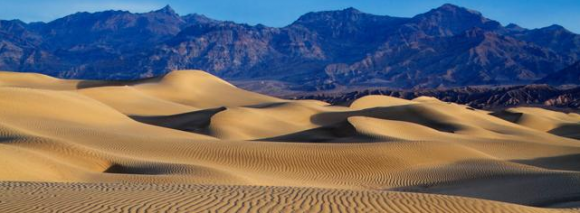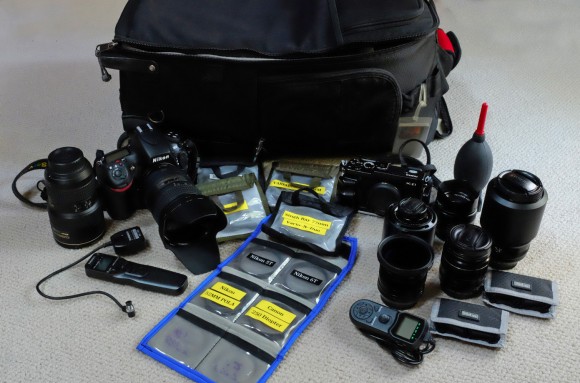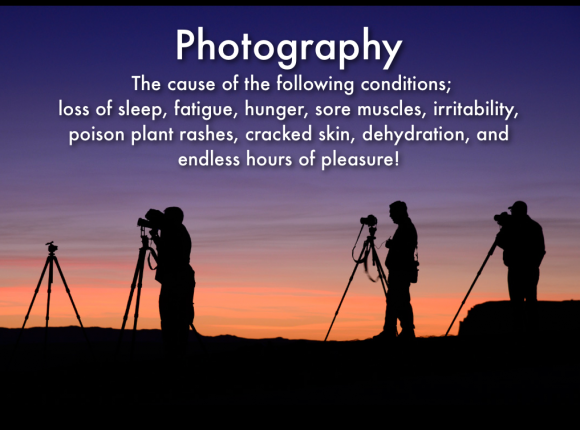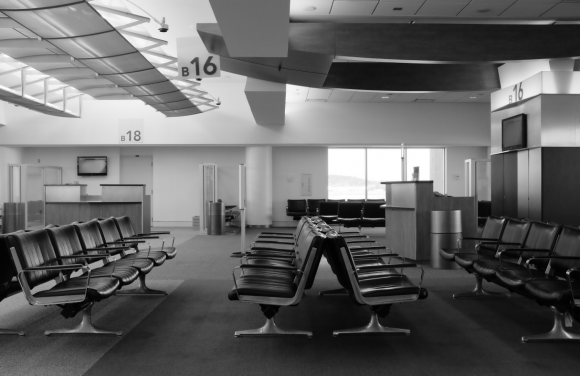Monthly Archives: September 2013

I can’t tell you how excited I am to be joining Jack Graham for his Death Valley Workshops in November! I really like Jack and his work is out of this world! This will be a very small group, so i9t will be a lot of hands on with both Jack and I!!! Below is the info on the workshop, please consider joining us, and contact Jack!!
When is this Workshop?
Nov 08 – Nov 12, 2013
How much is this Workshop?
$995 per person (Limited to 10 participants)
Please note that although the workshop starts at sunrise on November 8, we will meet in the parking lot of Zabriskie Point (in the park) on Thursday, November 7 for an hour or so to go over itineraries, travel, and workshop goals
Please consider joining
Bill Fortney and me in Death Valley
in November 2013. Instruction, unbelievable subject matter and great results are guaranteed!!!
From a personal viewpoint, getting to work with my dear friend (and world-class photographer/instructor)
Bill Fortney is more than I can express in words. In a few short minutes you’ll notice the feelings we have for each other both personally and professionally. It is my privilege to have Bill along with us. You’ll understand why when you get to Death Valley.
Please contact me at [email protected] or by phone 503-625-1430 if you have questions.
Photo Workshop Registration Forms & FAQS are located at the bottom of the far-left column
WORKSHOP OVERVIEW:
Death Valley National Park spans over 3.3 million miles making it the largest national park in the U.S. The closest major city is Las Vegas. Death Valley has some of the most expansive terrain offering unique and inspiring landscapes.
Photographing in Death Valley can be challenging. We will work with you to show you how to overcome these challenges. After spending a few days with us in DVNP, you’ll come away a better photographer.
Articles concerning some aspects of photographing in Death Valley can be found here (click links below)
ARTICLE 1 “Which One Works” #5 — Death Valley National Park
ARTICLE 2 The complete guide to Photographing the vastness of Death Valley National Park
We will photograph the expanse of the playa (dried up sale flats) to the many canyons within the park. Based on many years of leading workshops here in Death Valley, we’ll be at prime field locations, taking advantage of the atmospheric and light conditions that provide endless photographic opportunities. As a rule, bad weather can create good light, so we’ll hope for some degree of bad weather.
I have chosen to visit Death Valley NP this time of year in order to take advantage of the friendly temperatures (highs average 75 and lows 48 degrees), as well as the low angle of the light allowing for many hours of quality photography. This time of year, the Panament Mountains may have some snow on them. Also, November can bring uncertain weather, offering dramatic skies and conditions. In past years getting out to the playa at Badwater made for dramatic sunset and sunrise images.
Death Valley is a study in patterns and textures. We’ll work on all of the obvious techniques that go into making quality photographs, but we’ll also work on learning to see, and slowing down in order to make the most of our time in this magical area.
Death Valley is a great area to work on our photographic skills. One must take light into consideration more than anywhere else. Side lighting, backlighting will be discussed and used to capture images in Death Valley. We’ll work on images that portray depth, use leading lines and other graphic elements, as much as knowing the light to make some great images.
Within the park are some old mines, and wooden structures that we’ll photograph as well. Locations including Zabriskie Point, Mesquite Sand Dunes, Mosaic Canyon, Golden Canyon, Badwater, Dante’s View, Devil’s Golf Course, Artist’s Palate, and the Race Track are all on the agenda. In addition we’ll visit the ghost town which features a three story bank, a jail house and train depot, now in ruins.
The night sky will include a full moon on the weekend. If weather permits, we’ll get out to the dunes at night for some wonderful exciting night photography!
I am a great believer in preparation, understanding where I am photographing and becoming part of the land and environment. Nowhere is this more important than in Death Valley.
Unless we just get lucky to get out of our vehicles and hit on some really dramatic light, we’ll take some time and bond with our surroundings. I guarantee that unless you’ve been to Death Valley you will be overwhelmed with its inert beauty. Rushing to make photographs will result in mediocre results. Decide what strikes your eye or what is perhaps creating dramatic detail. Understand where we are, appreciate the inert beauty and slow down … take it all in … and I guarantee that you’ll come away with great images.
What makes photographing in Death Valley different from all other National Parks? Death Valley is spacious, that is an understatement. Unlike nowhere else in the United States does this become as intimidating as here. In addition, texture and patterns create photographic opportunities all over the park.
- I always try to find a foreground – mainly because of the vastness in many locations.
- I am always looking for depth in an image using a wide angel lens. We will work on hyper focal length, which is absolutely necessary to get the depth of field you want. You have to get low to the ground lots of times to get the correct depth and angle you need for a dramatic image.
- PRS — I always look for patterns, repetition and simplicity.
- Again because of the expanse, you need to pay attention to your backgrounds and make sure they do not take away from the scene.
- Exposures can be tricky in Death Valley because of the dramatic and sometimes contrasting light. Learning to meter using your spot meter is very important. Using graduated Neutral Density filters can compensate for quite common lighting difficulties.
Skill Level: Attendees should have a good understanding of their equipment. An understanding of how aperture, shutter speed and ISO work together is also a big advantage. As outlined below, we’ll be working on both the creative aspect of photography as well as the techniques used to create outstanding images. If you have a laptop or iPad by all means bring it along.
WHAT WILL WE BE WORKING ON?
We will take our time, and look for the inner beauty to capture in our photography. Patterns and foregrounds are the order of the day. We will stress simplicity and use all aspects, including Depth of Field, proper exposure and more to improve your overall photography as well as come away with some wonderful images in excellent venues.
- Improving your photography skills within these “hands-on” workshops
- Composition, exposure and essential elements needed to make a great photograph and to bring out the story within the image
- Use of color combinations, how to use color make the image stronger
- Other techniques including learning about how tonalities, negative space, balance, framing, emotional impact and flaws affect your images
- Seeing an image, working a scene, making a strong image
- Choosing the look of the final image in the field, not after the fact. Take an image knowing how you will be processing
- Making Panoramas, Helicon Focus and HDR techniques simple
- Basic processing, workflow, how to use available programs together. Use of NIK Software
The majority of instruction and nature photography tips and techniques will take place right there in the field. There’s no need to take notes. After the workshop you’ll receive a complete 60+ page syllabus containing everything we do in the field and more.
We take time in the evenings and periodically during the day to review our images in informal critique sessions. Special presentations concerning nature photography will also be made during these sessions.
Evenings consist of informal sessions to discuss information on photographing in the area, critique of your work shot during the workshop and general photography information.As with all our workshops, this is primarily a field workshop. We do not sit in a classroom during the daytime. We are out shooting and learning about photography in the field, not behind a desk. However, it is critical as well as being very informative, to take time to review your work and discuss important aspects of making quality photographs.
As in all Jack Graham Photography Workshops, more detailed information will be provided about 3 weeks before the start of the workshop.
TENATIVE ITINERARIES
A complete itinerary will be sent out prior to the workshop. We’ll meet in the Zabriskie Point parking lot about 4 p.m. on November 7. We’ll go over our goals, itineraries and other information necessary to make the workshop a success. After that we’ll shoot Zabriskie Point at sunset..
We’ll set out in the dark each morning to capture the unbelievable soft light in Death Valley during the morning’s golden hour. The balance of the day will be filled at other locations, ending in a sunset location each day.
In addition to visiting the locations already mentioned, we’ll spend time reviewing our images and have in-depth photographic discussions, based on what we are learning in the field in Death Valley.
TRAVEL INFORMATION
By Air: Fly into Las Vegas McCarran International Airport. From there, the drive to Death Valley is about 150 miles or 2 ½ hours. You take SR 160 north to Parumph, NV. Follow the signs to Death Valley Junction, CA and from there take SR 160 into Death Valley. Continue to Furnace Creek.
By Car: Depending on where you are coming from, you can get exact driving directions on
Mapquest
LOCATION / HOTEL INFO
Our workshop will be based out of STOVEPIPE WELLS RESORT in Death Valley NP.
IMPORTANT: You must book your own rooms. I have already blocked off rooms for us. You must ask for the Jack Graham Photography Workshop. Rooms are approximately $150 per night. You will want to arrive on November 7. The workshop ends at noon on Tuesday, November 12. If you have any difficulty at all, please ask for DOUG.
Stovepipe Wells Resort
PO Box 559
Death Valley, California 92328
Physical location: Hwy. 190
Death Valley, California 92328
Phone: 760.786.2387
Fax: 760.786.2389
Other Accommodations can be found at nearby Furnace Creek (about ½ mile drive from Stovepipe Wells)
Furnace Creek Resort
PO Box 187
Death Valley, California 92328
Physical: Highway 190, Death Valley, 92328
Phone: 760.786.2345
Fax: 760.786.2514
Remember: We’ll meet in the Zabriskie Point parking lot about 4 pm on November 7. We’ll go over our goals, itineraries and other information necessary to make the workshop a success … so please plan your arrival accordingly.
FOOD / DINING
As in any area, there are some decent places to eat. We will make sure we eat properly and stay hydrated through out the workshop. We’ll carry snacks and water with us at all times. Please note your dietary concerns, if any, on the registration form.
However, we are here to photograph and often the best light is at breakfast and dinner. Please know this in advance.
WEATHER
Detailed information will be provided about 3 weeks before the start of the workshop.
WHAT TO BRING:
ESSENTIAL PHOTOGRAPHIC EQUIPMENT: Besides camera gear (Having an extra camera body…just in case might be something to think about) I carry lenses from 24-300mm plus a 1.4 teleconverter.
- Extra camera body if you have one
- Lenses ranging from 24-200mm (if you have wider, bring it.)
- Tripod
- Polarizing Filter
- Graduated Neutral Density Filters I carry a 2 and a 3 stop “soft” Galen Rowell graduated filters (in X-Pro Size) by Singh Ray (If you order from them tell them you are doing my workshop and they will give you a 10% discount!)
- Back up Batteries & Chargers
- Lens shades & Cable release
- Non Abrasive cloth
- Clothing: Be prepared to keep the sun off your head. Be sure to bring proper outerwear for the weather/temperature. Good hiking boots are helpful, though any hiking will be very moderate at most. Most of the areas we go to are very close to the roads.
As we get closer to the workshop date, more detailed information regarding weather, clothing needs, etc. will be provided.
Blessings,
Bill
This entry was posted on Monday, September 9th, 2013 at 9:00 pm
You can follow any responses to this entry through the RSS 2.0 feed.

Before I get going on gear talk, let me say a sincere thank you to the great people that joined me in my programs at Photoshop World in Las Vegas! You guys were great and a lot of fun to present a program for. I also want to thank all those wonderful folks that stopped me just to say hi, it was great to meet the people that are helping make my dreams come true!!!!
So later this week I fly to Kalispel, Montana to head up into Glacier National Park for the long awaited workshop with Dr. Charles Stanley, Jim, and my great team! We have a fantastic group of folks joining us and anticipate a great workshop experience! I will be there a couple of days before the group arrives doing some scouting and shooting some for myself, I seldom get to do any really serious shooting when my attendees arrive. I’ve been working on the “perfect” working field system for some time, I think I’m getting close! Here is what I will transport to the workshop in my Think Tank Airport Security 2.0 bag:
A Nikon D800 body (lenses to cover 16mm to 300mm)
Nikon 28-300 AF-S VR f 3.5-5.6
Nikon 16-35 AF-S VR f 4
Yongnuo MC-36 R Wireless Remote
Fuji X-E1 Body (Lenses to cover 21mm to 300mm)
Fuji X100s camera / 35mm f 2 *(used to shoot the image above)
Fujinon 14mm f 2.8
Fujinon 18-55 f 2.8 – f4
Fujinon 35mm f 1.4
Fujinon 60mm f 2.4 Macro lens
Fujinon 55-200 f 3.5 – f 4.8
Wired electronic release with introvelameter
Half dozen spare batteries for each body, and chargers.
Close-up Diopters; Nikon 5T & 6T, Canon 250D, Raynox DCR-150
Polarizers on every lens (most are Singh Ray!)
Singh Ray Vario-N-Du0 ND filter (step up rings for each lens)
Giotto Blower Bulb
In my suitcase is a collapsed Think Tank Retrospective 5 which I use on site to carry a few extra lenses for short hikes.
So that is what I’m going to use this trip, and, as always, I will learn what I needed and what could have stayed home! I look forward to posting from a great workshop for you!!!!
Blessings,
the pilgrim
This entry was posted on Sunday, September 8th, 2013 at 4:05 pm
You can follow any responses to this entry through the RSS 2.0 feed.

Hey guys sorry for being so late on posting, killer day, long and busy, I didn’t shoot a single image today, will try again tomorrow! I thought this title slide might give you a chuckle, my audience liked it! The most important thing is that your prayers were answered in a big way today. I had the opportunity to talk privately with a number of people all of whom had one kind of spiritual need or another. It is quite amazing how God sends those that need His love, when we ask for the opportunity to minister in His name, and for His glory. Don’t stop praying, and while you are at it, please pray for my family as the enemy has been busy attacking those I love. God has already won this battle, but the war rages on in present time. Please pray for protection for those in the line of fire! We know this is a spiritual war, and we know in whom our protection lies.
Thanks for your support…..
Blessings,
the pilgrim
This entry was posted on Thursday, September 5th, 2013 at 2:41 am
You can follow any responses to this entry through the RSS 2.0 feed.

Step one on any journey is getting there! So I’m in another airport in the early a.m. waiting for my flight to leave. That is the easy part, though I must admit being two months removed from Nikon, this is not one of the things I will miss!!! No the first step is to actually have a plan and some goals for the trip, here are mine for Photoshop World 2013!
1. Give everyone who wants some of my time, as much as I can give. It is an honor to have people that care about what you do, and since they are making this dream a reality, they deserve my attention!
2. Give my best effort when teaching. I truly care about people getting their “moneys worth”! I have made a lot of preparation to be sure and give good information and keep it as entertaining as possible!
3. Renew old friendships and make new ones! There are so many people that I can’t wait to spend time with and a bunch I want to get to know!
4. Finally, and most importantly, always remember this opportunity is not about me, just as life itself, it’s about Him! I hope to share His lovee with everyone I meet, and that when they leave they may not remember me but will know they experienced His love!
Blessings,
the pilgrim
Photo Note: All images this week with the fabulous Fuji X100s!
This entry was posted on Tuesday, September 3rd, 2013 at 1:32 pm
You can follow any responses to this entry through the RSS 2.0 feed.






